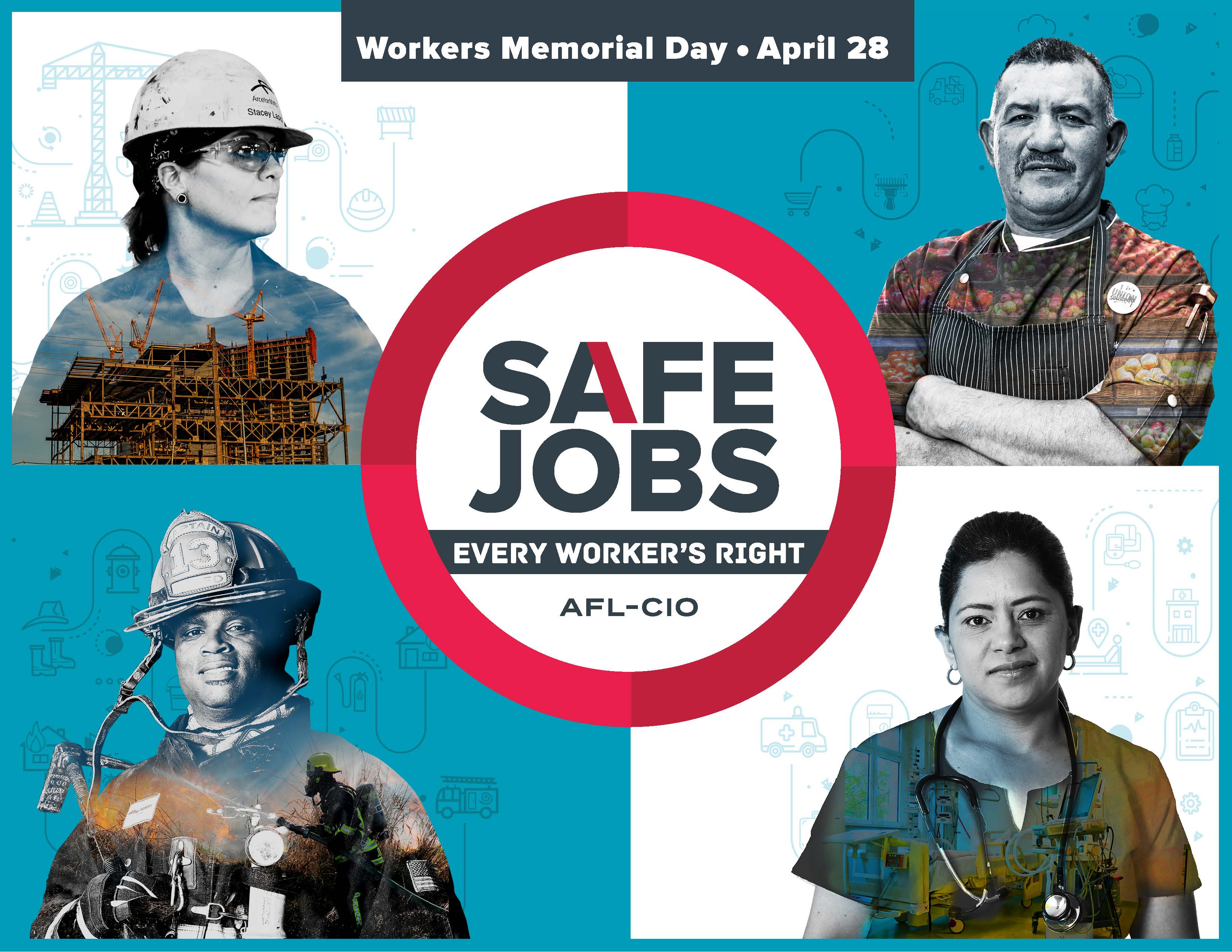Union members across the U.S. and
Canada will pause on April 28 to remember fellow workers who lost their lives
on the job over the past year and to recommit themselves to the effort to
prevent workplace deaths and injuries.

|
| Workers Memorial Day is April 28 in the United States. Canada celebrates a National Day of Mourning for workers killed or injury on the job on that same day.
|
Working families have long led the fight to provide safer working conditions, most notably with the passage of the landmark Occupational Safety and Health Act in 1970. But with some politicians constantly looking to roll back much of that work, this year’s Workers Memorial Day in the U.S. and Day of Mourning in Canada is a reminder that the mission of protecting working people on the job is never-ending.
“The IBEW was founded in 1891 to improve working conditions for line workers,” International President Lonnie R. Stephenson said. “Through all the changes in the electrical industry and in our other branches, that commitment to safety has remained our top priority. Workers Memorial Day and the Day of Mourning allow members in our two great nations to come together and honor our fallen brothers and sisters, making it a truly special occasion.
“This is no time to rest, however. Some politicians, particularly in the United States, make no secret they want eliminate or water down the protections we earned so that companies can pad their bottom lines. There is no better way to honor the memory or those who have died or were seriously injured than fighting back.”
During the first two years of the Trump administration, when Republicans controlled both the House and Senate, a rule was repealed that required employers to keep accurate safety records. So was another rule that made government contractors accountable for following health and safety laws.
The administration also has tried to cut the budgets for job safety research and coal mine safety enforcement and eliminate OSHA’s programs for training workers. It has declined to take action on serious health hazards like silica exposure in mining and workplace violence.
But there’s momentum for change with a new worker-friendly majority in the U.S. House. The AFL-CIO is urging working families to contact their representatives in Congress and ask them to support the Workplace Violence Prevention for Health Care and Social Service Workers Act, which would create an OSHA workplace violence standard.
There were more than 450 workplace homicides in the United States in 2017, the most recent year for which statistics are available, and about 28,000 workers missed time at work due to being attacked.
The new standard is designed to provide extra protection for health care and social service workers, who are particularly vulnerable. Among the co-sponsors are Rep. Donald Norcross, D-N.J., the only electrician and only IBEW member in Congress.
A total of 5,147 American workers died on the job in 2017, according to the Bureau of Labor Statistics. There were about 3.5 million injuries and illnesses reported by private- and public-sector employers, and the AFL-CIO believes the number may be more than twice that due to poor reporting standards. An estimated 95,000 workers die from occupational diseases caused by toxic chemical exposures and other health hazards each year.
In Canada, the Association of Workers’ Compensation Boards of Canada reported 951 workplace fatalities in 2017, an increase of 46 over the prior year. More than 251,000 workers lost time on the job due to work-related injuries or disease, an increase of about 10,000 over the previous year.
The Canadian flag will fly at half-mast over Parliament Hill and all federal buildings on April 28.